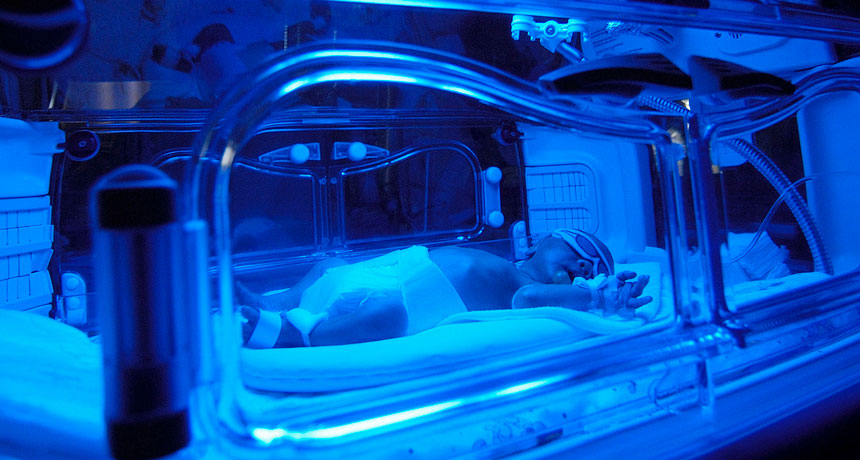In 1967, researchers saw the light in jaundice treatment

Premature babies, who often develop jaundice because of an excess of bile pigment called bilirubin, can be saved from this dangerous condition by the use of fluorescent light.… The light alters the chemistry of bilirubin so it can be excreted with the bile. Exchange transfusion is the usual treatment when jaundice occurs but this drastic procedure carries a … risk of death. —Science News, June 17, 1967
Update
Preemies aren’t the only babies at risk for jaundice. About 60 percent of full-term infants also develop the condition. Severe cases can cause brain damage if untreated. But today, some researchers warn that light therapy, now widely used, may not work for babies whose bilirubin levels are very high. And studies have begun to suggest a link between the therapy and certain childhood cancers (SN Online: 1/30/15). Though the risk of developing cancer is small, doctors should be cautious about prescribing the treatment, researchers wrote in 2016 in Pediatrics.